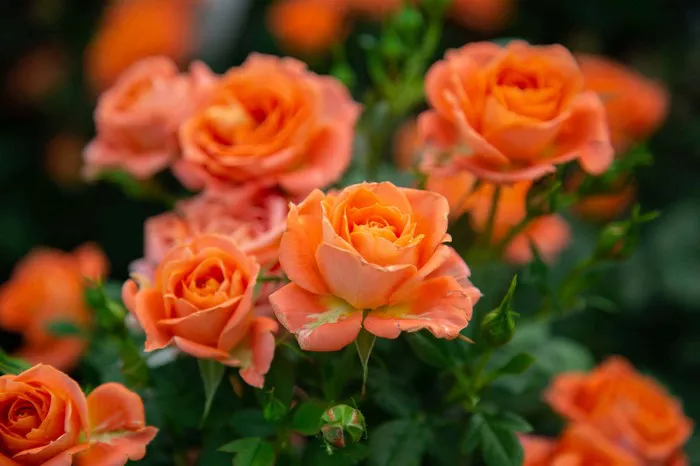Miniature roses, with their delicate petals and compact stature, captivate gardeners and enthusiasts alike. These pint-sized wonders bring charm and elegance to gardens, balconies, and indoor spaces. Yet, as with any living organism, understanding their lifespan and providing proper care is essential to ensuring their longevity. In this comprehensive guide, we delve into the lifespan expectancy, care instructions, bloom duration, overwintering tips, propagation methods, and common problems and solutions for miniature roses.
Lifespan Expectancy: Unveiling the Journey
Miniature roses, when cared for diligently, can thrive for a significant period. Generally, these petite plants boast a lifespan of 5 to 8 years under optimal conditions. However, advancements in breeding have led to the emergence of modern varieties capable of enduring up to 10 years. This lifespan expectancy serves as a testament to the resilience and adaptability of these miniature marvels.
Care Instructions: Nurturing Nature’s Delicacies
Proper care is paramount in ensuring the health and longevity of miniature roses. Begin by selecting a suitable location with well-drained soil and ample sunlight, preferably six hours of direct sunlight daily. When planting, ensure the root ball is level with the soil surface and spaced adequately to promote airflow.
Watering is crucial, especially during the growing season. Aim to keep the soil consistently moist but not waterlogged. Mulching can aid in retaining moisture and regulating soil temperature. Moreover, fertilize regularly with a balanced fertilizer to provide essential nutrients for robust growth and vibrant blooms.
In regions with scorching summers, providing some afternoon shade can prevent stress and sunburn. Conversely, in cooler climates, consider planting miniature roses in containers to facilitate mobility and protection during harsh weather conditions.
Bloom Duration: Embracing Nature’s Splendor
The blooming cycle of miniature roses is a sight to behold, with each flower exuding beauty and grace. Typically, these diminutive blossoms grace the garden with continuous blooms for 2 to 3 weeks per cycle. With proper care and maintenance, miniature roses can rebloom throughout the growing season, offering a kaleidoscope of colors and fragrances.
Deadheading spent blooms encourages new growth and prolongs the flowering period. Additionally, regular pruning promotes bushy growth and enhances air circulation, reducing the risk of diseases.
Overwintering Tips: Shielding Against the Chill
As winter approaches, it’s imperative to safeguard miniature roses from the harsh elements to extend their lifespan. Begin by ceasing fertilization in late summer to allow the plant to enter dormancy naturally. Mulch generously around the base of the plant to insulate the roots and protect against frost heave.
In colder climates, consider wrapping the plant with burlap or horticultural fleece to shield against freezing temperatures and drying winds. Alternatively, transplant potted miniature roses to a sheltered location or indoors to shield them from frost.
Propagation Methods: Cultivating Continuity
Propagating miniature roses allows enthusiasts to perpetuate their beauty and expand their garden collection. One of the most common methods is propagation from stem cuttings. Begin by selecting a healthy stem with at least three leaf nodes. Remove any flowers or buds and dip the cut end in rooting hormone before planting in a well-draining potting mix.
Maintain consistent moisture and provide indirect sunlight until roots develop, typically within 4 to 6 weeks. Once rooted, transplant the cutting into a larger container or directly into the garden.
Common Problems and Solutions: Navigating Troubled Waters
Despite their resilience, miniature roses are susceptible to a range of issues that can affect their health and longevity. Common problems include fungal diseases such as powdery mildew and black spot, as well as pest infestations like aphids and spider mites.
To combat fungal diseases, ensure proper air circulation and avoid overhead watering. Apply fungicidal sprays as needed, following label instructions carefully. For pest control, use insecticidal soap or neem oil to deter unwanted visitors without harming beneficial insects.
Additionally, monitor for signs of nutrient deficiencies and adjust fertilization accordingly. Yellowing leaves may indicate nitrogen deficiency, while stunted growth can signal insufficient phosphorus or potassium.
Conclusion
In conclusion, the lifespan of miniature roses is a testament to their enduring beauty and adaptability. By adhering to proper care practices, enthusiasts can nurture these delicate blooms for years to come. From planting to propagation, understanding the needs of miniature roses is key to unlocking their full potential and preserving their charm for generations to come.


